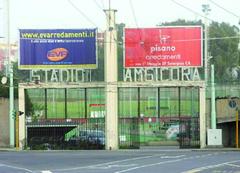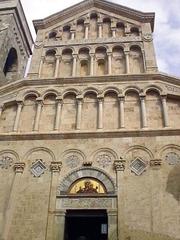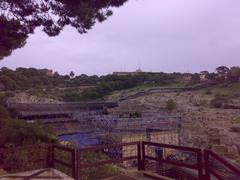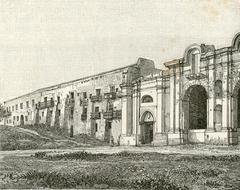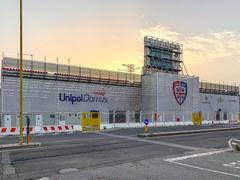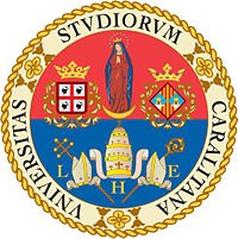
Museo Di Bonaria: Visiting Hours, Tickets, and Your Guide to Cagliari’s Most Significant Historical Site
Date: 04/07/2025
Introduction
Nestled atop Bonaria Hill in Cagliari, Sardinia, the Museo di Bonaria is a remarkable cultural and religious landmark. The museum, part of the Sanctuary of Nostra Signora di Bonaria, offers an immersive journey through centuries of faith, art, and seafaring tradition. Its origins are linked to the 14th-century legend of a miraculous statue of the Madonna and Child that washed ashore, an event that transformed the site into a major center of devotion for local communities and Mediterranean sailors alike. Today, the museum’s thoughtfully curated collections include sacred art, archaeological finds, maritime artifacts, and ex-voto offerings—tokens of gratitude from generations of devotees. This guide provides all the essential details for your visit, including updated Museo di Bonaria visiting hours, ticketing information, accessibility features, highlights of its collections, travel tips, and nearby attractions. For the latest information, consult the official museum website and Cagliari Turismo.
Table of Contents
- Introduction
- Historical Background and Significance
- Museo di Bonaria Visiting Hours, Tickets, and Location
- Museum Layout and Collection Highlights
- Religious and Cultural Importance
- Accessibility and Visitor Services
- Special Events and Guided Tours
- Practical Tips and Nearby Attractions
- Frequently Asked Questions (FAQ)
- Conclusion
- References
Historical Background and Significance
The Museo di Bonaria is deeply entwined with the Sanctuary of Nostra Signora di Bonaria, one of Sardinia’s most important centers of faith and a symbol of Cagliari’s maritime history. The hill has been a site of continuous human presence since pre-Nuragic times, with archaeological traces from Phoenician, Punic, Roman, and early Christian eras (Museionline; Wikipedia). In 1370, the arrival of a crate containing a statue of the Madonna and Child marked the beginning of the sanctuary’s spiritual legacy. The Mercedarian friars soon established a convent and church, which became a place of pilgrimage and a beacon for sailors seeking protection.
The sanctuary’s architecture evolved to blend Gothic-Catalan elements from the 14th century with later Baroque and modern additions. Over time, the accumulation of ex-voto offerings and sacred art from centuries of devotees led to the creation of the Museo di Bonaria in 1968, providing a dedicated space to showcase and preserve these treasures (Bonaria.eu; Italian Traditions).
Museo di Bonaria Visiting Hours, Tickets, and Location
Location: Via Santa Chiara, 18, 09124 Cagliari, Italy
Opening Hours:
- Tuesday to Sunday: 9:00 AM – 6:30 PM
- Closed Mondays and public holidays
- Last admission: 5:30 PM
Hours may vary during special events and festivals. Always check the official website or WhichMuseum for updates.
Tickets:
- General admission: €8
- Reduced ticket (EU citizens 18–25): €5
- Free for children under 18, Cagliari residents, and on the first Sunday of each month
- Special rates and group discounts may apply
(Some sources report free admission with donations welcome; please verify with the official website prior to your visit.)
Contact and Access:
- Phone: +39 070 30 17 47
- Public transport: Bus lines 1, 5, or 6 to the Bonaria stop
- Parking: Limited spaces available nearby
Museum Layout and Collection Highlights
The museum is divided into several thematic galleries, each offering a distinct perspective on Sardinia’s religious and maritime history (Museionline; WhichMuseum):
Corridor: Ex-Voto and Maritime Devotion
- Votive paintings, ship models, and ex-voto offerings from sailors
- Remnants of the legendary crate that brought the Madonna statue
First Hall: Archaeological and Medieval Heritage
- Pre-Nuragic to Roman artifacts from Bonaria Hill
- Medieval relics and a reconstruction of the Aragonese castle
- Exhibits on the Mercedarian Order’s history
Second Hall: Maritime History
- Around 150 historic ship models
- Unique items, such as an ivory ship and a silver anchor gifted by Queen Margherita of Savoy
- Mummified remains of the noble Alagon family from the Spanish era
Third Hall: The Sanctuary’s Treasure
- Gold crowns, royal and papal gifts, and precious liturgical objects
- Ostrich eggs, chains, and weapons offered by freed slaves
- Collection reflects the sanctuary’s status and the gratitude of generations
Artistic and Archaeological Galleries
- Liturgical vestments, Renaissance and Baroque paintings, and sacred sculptures
- Archaeological finds from the Nuragic, Punic, and Roman periods
- Ethnographic displays on Sardinian daily life across the centuries
Religious and Cultural Importance
The Museo di Bonaria preserves the spiritual heart of Cagliari. The sanctuary is a destination for major religious festivals, including the annual Madonna di Bonaria feast (April 24), the commemoration of the Madonna statue’s arrival (March 25), and the summer procession to the sea. These events draw thousands of pilgrims and reinforce Bonaria’s role as a protector of sailors and a symbol of hope for the faithful (Cagliari Turismo; Guide to Europe).
The sanctuary’s global influence is highlighted by its connection to Buenos Aires, Argentina, which was named “Puerto de Nuestra Señora de los Buenos Aires” in its honor.
Accessibility and Visitor Services
- Wheelchair Access: Ramps, elevators, and assistance available
- Restrooms: Accessible facilities on-site
- Gift Shop: Religious souvenirs and local crafts
- Languages: Signage in Italian, some English; English guided tours available by request
- Photography: Generally permitted without flash; restrictions apply during religious events
Special Events and Guided Tours
- Guided Tours: Available in Italian and English; book via the museum or tourism office
- Educational Workshops: For families and school groups
- Temporary Exhibitions: Rotating displays on Sardinian culture, art, or maritime themes
- Annual Festivals: Check for special schedules and possible access restrictions during feast days (Bonaria.eu)
Practical Tips and Nearby Attractions
- Best Times to Visit: Early mornings or late afternoons for a quiet experience; avoid major festivals for lighter crowds
- Dress Code: Shoulders and knees covered; hats removed inside sacred spaces
- Nearby Sites:
- Basilica di Bonaria
- Roman Amphitheatre
- Castello district
- National Archaeological Museum of Cagliari
- Poetto Beach
- Travel Tip: Combine your visit with a stroll along Via Roma or a panoramic photo session from Bonaria Hill’s terrace (Lonely Planet)
Frequently Asked Questions (FAQ)
Q: What are the Museo di Bonaria visiting hours?
A: Tuesday to Sunday, 9:00 AM – 6:30 PM. Closed on Mondays and public holidays. Always confirm before visiting.
Q: How do I buy tickets?
A: At the museum entrance or online through the official website.
Q: Is the museum accessible for people with disabilities?
A: Yes, with ramps, elevators, and assistance available.
Q: Are guided tours available?
A: Yes, in multiple languages by appointment.
Q: Can I take photos?
A: Yes, without flash. Restrictions may apply during services or for sensitive exhibits.
Q: What else can I visit nearby?
A: The Basilica di Bonaria, Castello district, Roman Amphitheatre, and Cagliari’s historic center.
Conclusion
Museo di Bonaria is a cornerstone of Cagliari’s spiritual and cultural landscape. Its extensive collections, evocative setting, and welcoming atmosphere make it a must-visit for anyone interested in Sardinia’s history, maritime heritage, or religious traditions. With accessible facilities, modest admission, and a program of events and guided tours, it offers something for every traveler. For a full experience, plan your visit around major festivals or join a guided tour, and explore the surrounding historical sites.
For updates, special events, and additional travel tips, consult the official museum website, Cagliari Turismo, and download the Audiala app for exclusive content.

